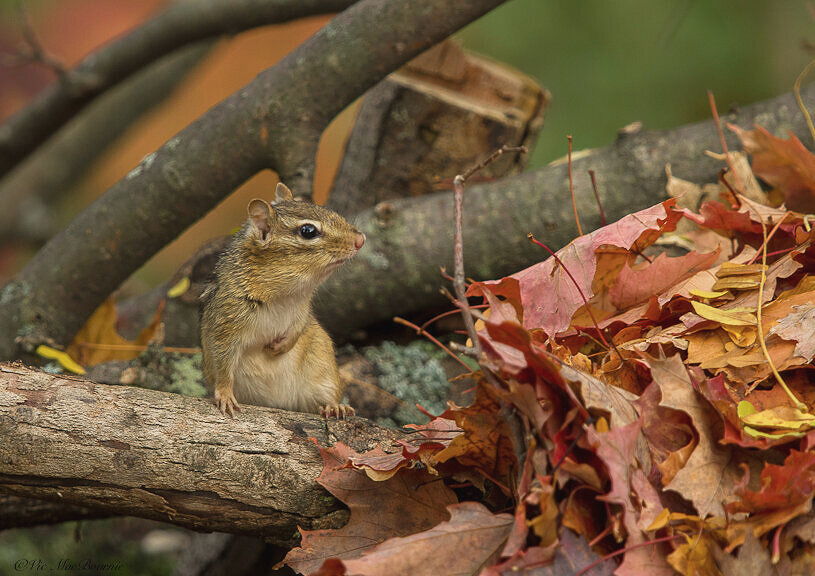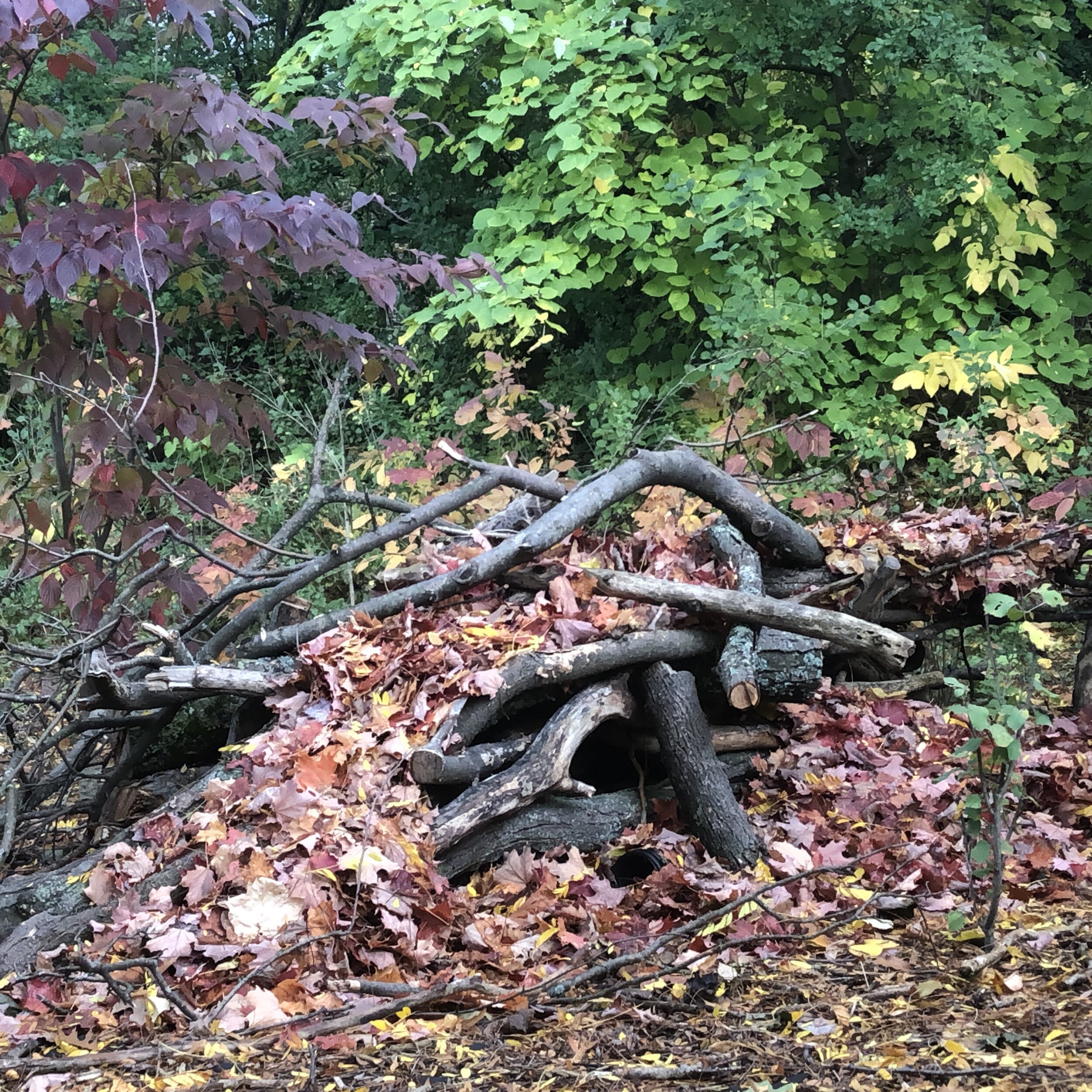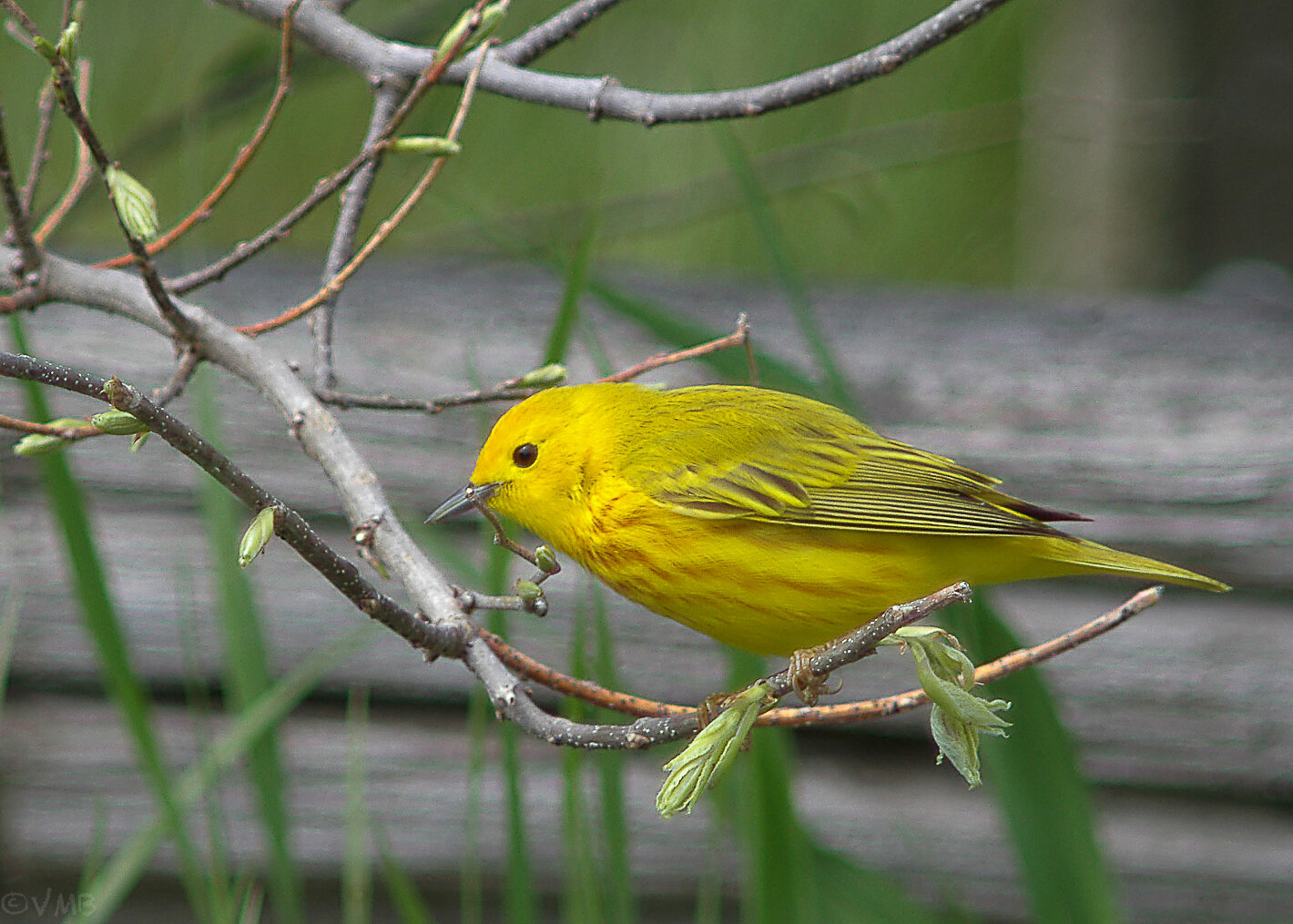Building a brush pile for your Woodland garden
A brush pile provides habitat for a multitude of mammals, insects and reptiles. But the real bonus of a backyard brush pile is that it may just lure in new birds that don’t normally visit your Woodland garden.
Wood piles provide perfect hunting grounds for insect-eating birds
There are days we look out from our patio and lose count of the chipmunks. At one point eight under the bird feeder was our record.
That’s been shattered a few times since then. Add to that a handful of spunky red squirrels and a couple of black and grey ones, and it doesn’t take much to see that our four-legged friends have found a home here.
In our yard, rabbits and groundhogs are always around and then there is our neighbourhood fox on patrol morning and evening. Deer make themselves at home during different times of the year, as do the skunks and possums.
So why would I build a woodpile in the backyard?
A woodpile is a valuable safe spot for so many of your backyard critters providing many of them with a safe place to live and others with food sources in the form of insects, amphibians and small mammals. Woodpiles developed over time become a go-to place for insect-eating birds to look for food sources. As they begin to break down over time, they become a home for fungi, reptiles and amphibians.
Not a day goes by when these critters don’t provide us with hours of entertainment chasing one another about the yard, running through the understory on some highway of branches known only to them, and sending out warnings of pending danger when the fox or hawk shows up looking for a quick meal.
Just recently I set up a trail camera pointed at the brush pile and in one night I was able to see two skunks, a racoon and a possum at our wood pile. That shows just how busy the pile is in the evening and throughout the night. A trail camera can be an excellent way to find out what animals are visiting a particular area of your garden.
Our woodpile is a very popular spot for both the chipmunks and red squirrels. I can’t imagine how many sunflowers are tucked away in the crevices of the branches. A generous addition of leaves creates a more comfortable spot for garden critters as fall and winter approaches.
I’ll never forget the day a neighbourhood cat caught one of our chippers in the backyard. I ran out to scare the cat, who dropped the chipmunk as I approached at a dead run. The cat had no intention of leaving the chipmunk, but I scared it enough for the cat to drop the little guy at my feet. Before I knew it, the little chipmunk scampered up my pant leg, up my back and perched itself on my pretty much bald head. Sitting there was as far away from the cat that it could possibly get. The cat missed the great escape and was looking through the grass for little chipper who, by then, had settled onto the top of my head like he was king of the world.
I wasn’t looking forward to the cat noticing the little guy on my head and clawing its way up my leg and onto my unprotected skull, so I just turned around and walked away with chipper’s little claws clinging to my scalp. We left the bewildered cat frantically searching for the little guy in the tall grass. I simply reached up, grabbed the little guy and set him free in another corner of the garden.
The backyard wood pile is being covered in leaves moved from the front of our home. The leaves provide a blanket over the woodpile and provide an even better habitat for insects, small mammals and reptiles that call it home.
Two lessons learned here: First, keep your cats in the house where they can’t kill every wild neighbourhood creature trying to live their lives; and two; provide the little creatures areas where they can feel relatively safe.
And, a wood pile or brush pile is one of those safe places.
They form micro-habitats where mammals, birds, reptiles and insects come together.
They can be as simple as a variety of branches piled into a corner of the yard and added to regularly, or as complex as a highly planned structure of carefully placed branches rising out of the depths of the soil with specially formed pockets for amphibians, integrated bird houses and vines interwoven through the branches.
The branches can be placed horizontally or dug into the ground to rise up vertically. Either way, it should not take long before your woodland friends will check out the woodpile.
Wood piles provide a natural habitat for so many of our Woodland friends.
Consider building your woodpile in an area of the garden where it gets dappled sun, providing a habitat that is neither too hot in the summer months, nor too cold for hibernation through the winter.
Depending where you are and the fauna already living in the yard, you can expect small mammals from chipmunks to rabbits and groundhogs. Don’t be surprised if you attract a skunk or mice, which is a good reason to build your pile in a corner of the yard away from the home or a well-used patio.
Yellow warblers are an insect-eating bird that might become a regular visitor to your brush pile.
Snakes, toads, salamanders and a host of insects will likely find the woodpile hard to resist, especially as the branches begin to decompose and return to the earth.
This fall, the woodpile has become the dumping ground for bags of leaves from the front of the home. (Click for my Blog post on why you should leave your leaves) The leaves will act like a blanket protecting the insects, reptiles and small mammals that have taken up residence in the woodpile. As the leaves decompose, the leaf mold will encourage more microbial life and help the branches break down even further. The leaves will also give birds a place to scratch around this winter looking for hidden insects and pupae.
Birds that might not normally visit your Woodland will find the woodpile provides a smorgasbord of insects. Bluebirds, woodpeckers, orioles, robins and warblers to name just a few insect-eating birds, that might become regular visitors to your woodland.
You can encourage them to discover the woodpile with a little help from some dried meal worms sprinkled about and maybe pushed into some natural cavities in the tree stumps. Meal worms are available at most good bird stores. UK readers can check out Gardenbird for a complete supply of food and birding accessories.
Encourage some berry producing vines to weave their way through the branches and you are inviting even a greater variety of birds to your yard.
While I get great enjoyment from my bird feeding stations, providing natural food sources to our feathered friends is always the goal we should aspire to in our gardens. I have written a comprehensive post on feeding birds naturally. You can read about it here.
An added bonus is that brush piles are excellent places to set up a photographic blind to capture your woodland friends in their natural habitat.
In addition, if it is safe to do so, leave dead trees, tree stumps and branches rather than having them removed by tree services. Dead trees are vital for many birds who depend on them to create nesting cavities. Woodpeckers and bluebirds are just two that come to mind.
Just recently, I heard a tapping in the back corner of the garden and went over to investigate. Upon inspection, I could still hear it but could not locate the source of the tapping. Then, a large Pileated woodpecker appeared not more than 10 feet away from where I was standing, from the back side of a dead tree. Tapping away oblivious to me standing there in amazement. It was working what was left of an old dead tree that so many homeowners would have long removed at a high cost to both them and the wildlife that depend on it.
My suggestion, just leave it. If the snag does not pose a danger, leave it for the birds. Maybe let a vine like virginia creeper grow up it and provide the birds with an ideal habitat where it can find places to live and sources of food.
If you are interested in backyard birds, please consider signing up for my backyard newsletter. The sign-up page is at the bottom of my homepage. Not only will the newsletter provide in-depth articles on attracting, feeding and photographing backyard birds, I am also working with local artisans to provide discounts on incredible bird-related feeders, houses and other goodies backyard birders will love. In addition there will be regular giveaways , including gardening books and birding items.
This page contains affiliate links. If you purchase a product through one of them, I will receive a commission (at no additional cost to you) I try to only endorse products I have either used, have complete confidence in, or have experience with the manufacturer. Thank you for your support. This blog would not be possible without your continued support.





